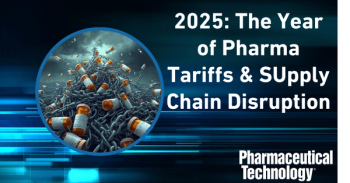
Pharmaceutical Technology Europe
- Pharmaceutical Technology Europe-11-01-2011
- Volume 23
- Issue 11
Threats and Opportunities in Cardiovascular Health
With the cardiovascular disease burden in Europe increasing, policymakers, regulators and other healthcare stakeholders are seeking to raise awareness and lessen the threat.
Cardiovascular disease is a major health threat in Europe. Every year, cardiovascular disease accounts for 23% of Europe's disease burden and is responsible for nearly half of all deaths (48%) in the region (1). Major risk factors include diet, obesity, diet, smoking, physical inactivity, alcohol consumption, high blood pressure and high cholesterol.
Nathan Jessop
Recent health statistics have renewed concerns that the situation is worsening (1). For example, obesity and physical inactivity have often been linked to adult lifestyles, but these risk factors are now routinely being observed among children. According to the European Heart Network, almost 20% of children in Europe are overweight or obese (2). Similarly, although public perception of heart disease mainly focuses on men, women are also increasingly affected; indeed, cardiovascular disease is the main cause of death in women in all European countries (1). One contributory factor is that a previously seen decline in smoking across Europe appears to have slowed and that women now smoke nearly as much as men.
Not surprisingly, cardiovascular disease has a huge economic impact in Europe. The cost to the EU economy has been estimated at €192 billion a year, with around 57% of this related directly to healthcare costs, 21% to productivity losses and 22% to the informal care of people with cardiovascular disease (1).
Multiparty interest and initiatives
European policymakers, regulators, the medical community and patient groups alike are alarmed at the impact cardiovascular disease has had in the region and in recent years there has been increasing cooperation between countries to lessen the threat. Part of this cooperation has involved raising the profile of World Heart Day. Created in 2000 by the World Heart Federation, World Heart Day is an annual event held on 29 September to inform people that heart disease and stroke are the world's leading cause of death. In Europe, this year's event was backed by the EMA, which worked together with other organisations representing patients. A number of pharmaceutical companies, including AstraZeneca, Pfizer, Sanofi, Bayer and Boehringer Ingelheim, also supported the 2011 event.
This year's event centred on individuals to drive home the importance of healthy lifestyles (3). People were encouraged to visit their doctor and have their blood pressure, cholesterol and glucose levels, waist-to-hip ratio and body mass index assessed. The campaign also featured a "know your numbers" theme to make people more aware of their risk of developing cardiovascular disease and the need to develop a personal action plan. The World Heart Federation also encouraged companies to become involved by educating their employees in the workplace. The organisers emphasised economic arguments and highlighted the financial benefits for companies of having a healthier workforce.
The EMA plays an important role in the authorisation of medicines to treat heart disease and stroke and has used this position to become more directly involved in initiatives, such as World Heart Day, as a means to lessen the healthcare burden of cardiovascular disease. It also has an important role in providing guidance to the pharmaceutical industry and to users of its cardiovascular products, and organises regular events and meetings for stakeholders. In late 2010, for example, the EMA set up an expert group meeting on paediatric heart failure. The group's objectives include the optimal design of studies on drug development in paediatric heart failure, developing a priority list of pipeline drugs in this field and establishing a wider paediatric cardiology network. In terms of high-profile cardiovascular guidance projects, in September 2011, the EMA began finalising its benefit–risk review of Sanofi's anti-arrhythmic medicine Multaq (dronedarone) after two patients taking the medicine experienced liver damage in January 2011. In the US, Sanofi took note of this development and sent a letter to healthcare professionals to suggest considering periodic liver-function tests in patients taking Multaq (4). The FDA reacted by issuing its own safety announcement while the EMA began to independently review the data. By July 2011, the scope of the EMA review had been extended to look at emerging data related to the effects of the medicine on the heart, blood vessels and lungs. Due to the seriousness of the situation, the EMA held additional meetings outside of its normal schedule.
The EMA has also been collaborating with the European Heart Network (EHN) with respect to World Heart Day. The EHN is an alliance of heart foundations and nongovernmental organisations throughout Europe, with member organisations in 26 countries. Using advocacy, networking, education and patient support, the EHN seeks to play a leading role in the prevention and reduction of cardiovascular diseases. The EHN believes that 80% of current cases of cardiovascular disease can be prevented and that even small reductions in incidence and mortality will result in large health gains and reductions in direct and indirect healthcare costs (5). With this in mind, EHN and the European Society of Cardiology created a joint project called EuroHeart. The project involves partners in 21 countries in the EU and the European Economic Area, and receives funding from the European Commission Public Health Programme. The first EuroHeart ran from April 2007 to March and focused on five core areas, including the impact of cardiovascular disease on women and the implementation and adaptation of European guidelines on disease prevention to national situations. EuroHeart II is now underway and will analyse the current situation regarding cardiovascular disease in the EU with the goal of developing a long-term strategy. In particular, the EHN is keen to develop measures for less-advantaged groups.
The fight against cardiovascular disease now has a high political profile thanks to the EHN and European Society of Cardiology. These two organisations manage the Secretariat for the Members of the European Parliament (MEP) Heart Group. This forum is made up of MEPs who have an interest in promoting measures to tackle the threat of cardiovascular disease. Several of the members have a medical background, although there is no restriction on the MEPs who can become involved. The group has been heavily involved in raising the profile of World Heart Day at a political level to influence EU health policy. In March 2011, the MEP Heart Group held a meeting to examine how e-healthcare initiatives could be tailored for cardiovascular disease. Its October 2011 meeting examined how learnings from the United Nations Summit on NonCommunicable Diseases could be applied to the group's own objectives.
Opportunities for the pharma industry?
For the pharmaceutical industry, cardiovascular disease is an important commercial target for treatments and diagnostic tools. Typically, the cardiovascular therapeutic area comprises around 15% of the total pharmaceutical market (6), and Europe's political, regulatory and medical emphasis on improving the outlook for cardiovascular health should create further opportunities for companies to market products in this therapeutic area. Despite the expected demand, however, pharma companies are concerned that cost pressures and cautious regulatory approaches will stand in the way of innovative therapies. It is also unlikely that the EMA's ongoing Multaq review will add to the industry's confidence.
At the 2010 European Society of Cardiology's annual meeting, the organisation's president, Roberto Ferrari, was cited as implying that cardiology had become a victim of its own success (7). Although noting that therapeutic advances in cardiovascular medicine had increased average life spans by about 7–10 years, he also added that regulatory demands were increasing, particularly regarding the required size of clinical trials; large-scale trials inevitably drive up the expense of the development programme. One fear expressed was that companies might choose to reduce investment in the cardiovascular area and preferentially focus on therapy sectors seen as more profitable, such as oncology.
But it's not all bad news on the regulatory front regarding pharmaceutical innovation in this therapy area. Since 2006, the European Federation of Pharmaceutical Industry Associations (EFPIA) has been working with the EMA to develop reliable biomarkers for cardiovascular drug development and in 2009, a workshop was held to discuss the possibilities (8). As biomarkers represent substitutes for clinically meaningful endpoints, their regulatory acceptance would revolutionise cardiovascular drug development by shortening development times. Potential candidates fall into three areas: laboratory markers, physiological parameters and imaging biomarkers. Current thinking is that a cluster of biomarkers will be needed to make progress, as well as collaboration between the pharmaceutical industry and EMA. Fortunately, it does appear that both sides are eager to cooperate and this bodes well for the development of new cardiovascular therapies in line with public health objectives.
Reference
1. European Heart Network, "Cardiovascular Disease Statistics" (2011).
2. European Heart Network, "Children and Obesity and Associated Avoidable Chronic Diseases" (2011),
3. World Heart Federation, "World Heart Day" (2011),
4. L. Nainggolan, "FDA Alert: Dronedarone and severe liver injury",
5. European Heart Network
6. URCH Publishing, Pharmaceutical Market Trends, 2010–2014 (UK, 2010).
7. EFPIA, "Enlightened self-interest delivering wider insights?", blog post, (2010),
8. Gonzalo Calvo, "Cardiovascular Biomarkers: A Regulatory Perspective", Presentation from the EMEA/EFPIA Workshop On Biomarkers (2009).
Articles in this issue
about 14 years ago
Focus on Standardisation, Quality by Design and Regulatory GMPabout 14 years ago
EFPIA for Greater Patient Safetyabout 14 years ago
Jobs and Innovationabout 14 years ago
What's on the Box?about 14 years ago
Newsabout 14 years ago
Under Continuous Considerationabout 14 years ago
Applying Universal Anticounterfeiting Technologiesabout 14 years ago
Europe Prepares To Battle The Counterfeitersabout 14 years ago
Optical Character Recognition and Code Verificationabout 14 years ago
Ensuring Compliance With Code ReadabilityNewsletter
Get the essential updates shaping the future of pharma manufacturing and compliance—subscribe today to Pharmaceutical Technology and never miss a breakthrough.




